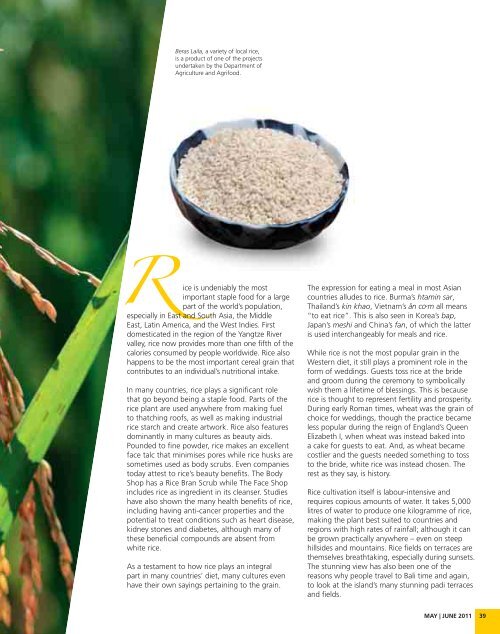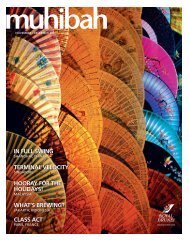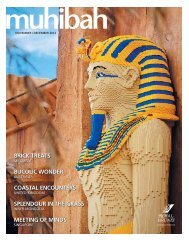SHORT AND SWEET FINDING AUTHENTICITY NORTHERN GEMS ...
SHORT AND SWEET FINDING AUTHENTICITY NORTHERN GEMS ...
SHORT AND SWEET FINDING AUTHENTICITY NORTHERN GEMS ...
You also want an ePaper? Increase the reach of your titles
YUMPU automatically turns print PDFs into web optimized ePapers that Google loves.
Beras Laila, a variety of local rice,<br />
is a product of one of the projects<br />
undertaken by the Department of<br />
Agriculture and Agrifood.<br />
R ice is undeniably the most<br />
important staple food for a large<br />
part of the world’s population,<br />
especially in East and South Asia, the Middle<br />
East, Latin America, and the West Indies. First<br />
domesticated in the region of the Yangtze River<br />
valley, rice now provides more than one fi fth of the<br />
calories consumed by people worldwide. Rice also<br />
happens to be the most important cereal grain that<br />
contributes to an individual’s nutritional intake.<br />
In many countries, rice plays a signifi cant role<br />
that go beyond being a staple food. Parts of the<br />
rice plant are used anywhere from making fuel<br />
to thatching roofs, as well as making industrial<br />
rice starch and create artwork. Rice also features<br />
dominantly in many cultures as beauty aids.<br />
Pounded to fi ne powder, rice makes an excellent<br />
face talc that minimises pores while rice husks are<br />
sometimes used as body scrubs. Even companies<br />
today attest to rice’s beauty benefi ts. The Body<br />
Shop has a Rice Bran Scrub while The Face Shop<br />
includes rice as ingredient in its cleanser. Studies<br />
have also shown the many health benefi ts of rice,<br />
including having anti-cancer properties and the<br />
potential to treat conditions such as heart disease,<br />
kidney stones and diabetes, although many of<br />
these benefi cial compounds are absent from<br />
white rice.<br />
As a testament to how rice plays an integral<br />
part in many countries’ diet, many cultures even<br />
have their own sayings pertaining to the grain.<br />
The expression for eating a meal in most Asian<br />
countries alludes to rice. Burma’s htamin sar,<br />
Thailand’s kin khao, Vietnam’s n c m all means<br />
“to eat rice”. This is also seen in Korea’s bap,<br />
Japan’s meshi and China’s fan, of which the latter<br />
is used interchangeably for meals and rice.<br />
While rice is not the most popular grain in the<br />
Western diet, it still plays a prominent role in the<br />
form of weddings. Guests toss rice at the bride<br />
and groom during the ceremony to symbolically<br />
wish them a lifetime of blessings. This is because<br />
rice is thought to represent fertility and prosperity.<br />
During early Roman times, wheat was the grain of<br />
choice for weddings, though the practice became<br />
less popular during the reign of England’s Queen<br />
Elizabeth I, when wheat was instead baked into<br />
a cake for guests to eat. And, as wheat became<br />
costlier and the guests needed something to toss<br />
to the bride, white rice was instead chosen. The<br />
rest as they say, is history.<br />
Rice cultivation itself is labour-intensive and<br />
requires copious amounts of water. It takes 5,000<br />
litres of water to produce one kilogramme of rice,<br />
making the plant best suited to countries and<br />
regions with high rates of rainfall; although it can<br />
be grown practically anywhere – even on steep<br />
hillsides and mountains. Rice fi elds on terraces are<br />
themselves breathtaking, especially during sunsets.<br />
The stunning view has also been one of the<br />
reasons why people travel to Bali time and again,<br />
to look at the island’s many stunning padi terraces<br />
and fi elds.<br />
MAY | JUNE 2011 39






